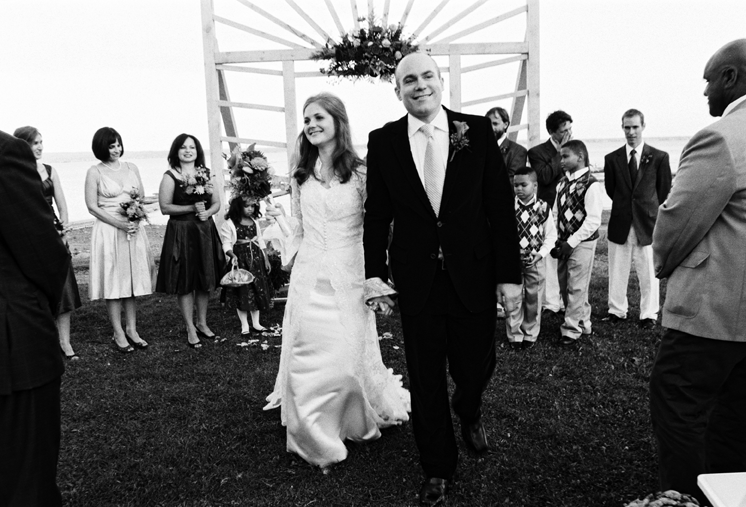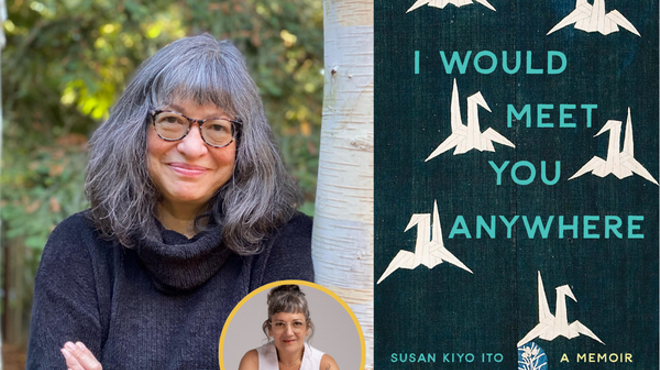When the lights go up on the naked, washed tables that once held your carefully chosen three-course meal, your wedding day will come to mind only in snippets of faint sounds and flashes of smiles. But it will have been forever captured visually and left for you to rifle through in 4x6 print boxes, on CDs, and in wedding albums. As you plan for the upcoming blur of this day, with all the intense hopes and milestones the preparation entails, there are a few things that you can do to ensure those visual memories show you in the best, most blissful light.
1. Getting Ready
There’s a lot of pressure on a bride to be the prettiest woman in the room. And there are many treatments and products out there waiting to up their price to “bridal” as soon as you mention the word. But in reality, though all eyes will be on you, chances are your guests will simply be looking at how happy/nervous/contented their daughter/sister/niece/cousin/friend is. And your photographer is just praying that you look natural and vibrant. Gone are the golden days of cinema, where heavy makeup was needed to photograph well. As veteran local wedding photographer France Menk says, “If your makeup looks natural in the mirror, it will look natural in the photos.” The week of your wedding is not the time to experiment with a new beauty treatment, like facial waxing or spray-on tans. After years in wedding, commercial, and studio photography, Tivoli’s Cynthia Del Conte advises against shiny makeup and sparkly powders. “They just make you look sweaty in the pictures,” she says. She also suggests that brides build in extra time for the hair and makeup. Very often things will run long in the beginning, and then the time for formal photos gets rushed as dinner is ready or the sun is setting. Del Conte suggests, “Tell them to be done one-and-a-half hours before you really need to be finished. Then you can sit around in your bathrobe with your friends and sip champagne, rather than have the anxiety of being late.”
2. Organizing Formals
Every wedding photographer suggests the couple create a must-have shot list. Denise Edkins of Your Day Photography in New Paltz provides her clients with the list and suggests they assign a “wedding wrangler” to specific group shots. “The ‘wrangler’ will know everyone’s names and faces who need to be in the photo and will help to get those ‘main players’ to the assigned place and time of the portraits,” Edkins says. Michael Gold of the Corporate Image, also of New Paltz, reminds couples to let the photographer know the nuances of family relationships, especially if parents are divorced and wouldn’t want to be pictured together. It’s helpful to determine in advance the location of the formal photos. You can arrange for your photographer to do a site viewing where you can walk around the grounds together, talking about your vision and ideas. If your photographer has worked at your wedding site before, this conversation can happen via e-mail or telephone, as well. Ion Zupcu, who spent years in New York City and now has a studio in Hopewell Junction, suggests that couples “listen to the professional first and then ask questions or make suggestions.” There are a lot of considerations when choosing a good spot for pictures, and your wedding photographer knows what will work best. After you’ve determined the location and timing for the formal photos with your photographer, don’t forget to let family and bridal party members know. The rehearsal is usually an ideal time.
Del Conte suggests, “Make your must-have list, and then make it shorter. Because remember, on the day of the wedding, once you start those group shots, a third of the way through you’re going to want to be done!” She says it’s better to have a photograph of everyone together rather than having many shots with multiple combinations of people. There’s only so much room in a frame or wedding album.
3. Think About the Light of Day
There are certain times of day that are more or less photogenic. In the summer, when the sun doesn’t set until eight or nine o’clock, there’s time to have an evening ceremony with natural light. One problem you could run into, however, is that if you plan to do your formal photos after a ceremony timed for sunset, you’ll quickly lose the light. It’s not impossible, but you’ll definitely want all of your family ready to go right after the ceremony, and you’ll want to skip the receiving line. “We all know way ahead that during the summer the sun is going down after 8pm and after 5pm in late fall and winter,” says Zupcu. “All the formals should be scheduled to take place before the sun is going down.” If you’re working with a small window of opportunity for the light during formal photos, be sure things don’t run long in the beginning, or you could end up doing family pictures at dusk, which would require over reliance on flash and studio lighting.
Late afternoon emanates long, golden sunrays that make for beautiful back- and side-lighting opportunities. Early morning light offers the same beauty, but in order to catch those long rays, you’d need to start your ceremony very early. Mid day is the least photogenic. As the sun hovers overhead at around noon, it casts long nose shadows and not enough light around the eyes, making them look sunken. Pictures can look very contrasty at mid day because the difference in exposure between the bright areas and the shadow areas is greater. So that’s when you get a half-black/half-white face with distracting shadows.
Often the timing is solely determined by the officiant and reception venue, and depends on availability. If you can speak with your photographer before determining the timing for the day, that would be ideal.
4. Think Collaboration
“Every wedding is really a collaborative effort, and everyone’s suggestions are invaluable to the success of one’s wedding photos,” remarks Gold. “I’m always happy to have families and bridal party members at my side when photographing, aware that creative photographic teamwork invariably leads to better photographs.” But Del Conte and Menk caution that it’s a fine line between collaboration and interference with the creative process. As Del Conte notes, “It really isn’t easy to have everybody looking great in one place. Wedding photography is a participation sport—the photographer can’t create the pictures unless everyone is involved.” She argues that it’s distracting to those being photographed when the guests are shooting at the same time, and it makes it hard for the photographer to shoot quickly. Menk takes it a step further and requests that only one person be her point person for specific photo requests at the reception. “It interrupts my rhythm and creative flow,” she explains. “And I could end up taking orders rather than actually shooting pictures.”
5. Eventful Moments
At a wedding at Wynkoop House in Stone Ridge, a nervous bride stood at the top of the aisle. She didn’t at all like being in front of the camera. Edkins tells the story of joking with her and reminding her that she would thank her for it later. “She got so relaxed she even waved at the camera when she was waiting for the processional,” Edkins recalls.
The trick for those limelit wedding moments is to smile, smile, smile, even if you just feel nervous and stressed. It may be just the thing to get those endorphins going and get you to remember that the best thing you can bring to your wedding is a sense of humor. When walking down the aisle, it’s a nice sentiment to want to appear serious, but the camera will see it as solemn or scared. On the other hand, when you enter the reception, it’s more photogenic to laugh than to “Woo-hoo!” It’s just always more flattering to smile.
6. N-E-R-V-O-U-S
That being said, there are some practical tips for fighting off the camera-face jitters. One idea for formals is to look at the photographer’s trigger finger rather than into the lens. You begin to concentrate on when the photographer shoots and forget that your photo is being made. The angle of your eyes is also more flattering and somewhat angelic, though still direct. Put your hands on your hips to make your upper arms look thinner. Similarly, if you’re self-conscious about your arms, skip it and just wear sleeves. So many wedding dresses these days are strapless, but not everyone has the arms and shoulders for them. Save yourself from your own scrutiny later, and let your arms be covered and comfortable. Or if it’s a double-chin you hate, try standing with your feet slightly apart, one in front of the other. Lean your weight on the front leg, and drop your chin ever so slightly. To achieve a truly happy expression, if you’re not feeling it right then, think about someone who really loves you and always thinks you look great—your new spouse, perhaps—and put a picture of him or her in your mind.
7. Getting to Know Each Other
Most photographers appreciate the opportunity to learn more about the wedding couple before the big day. It helps them to better create personalized photographs. Zupcu strongly suggests doing an engagement shoot prior to the wedding. “I see how they respond to the camera and, most importantly, they get to see my work before their wedding day. I need confident, relaxed, and great expressions for my camera at their wedding day,” Zupcu says. Menk tells of a wedding she shot for days. “I started days before the wedding and ended up the last one at the reception,” she says. “I shot the bride making the cake with her mother days before. It made a great story, and I loved doing it.” Edkins agrees that the better a client can identify and communicate their dream images to her, the easier it is to make that happen.
In the end, a wedding is about two people walking together in life, about the merging of two families into an extended personal community, and about celebrating. If you allow yourself to focus on what’s important, your photos will be about all that, too. “Beyond everything,” says Del Conte, “just remember: It’s a party. Just remember what it is, and try to stay calm.”
RESOURCES
Your Day Photography: www.yourdayphoto.com
France Menk: www.france-menk.com
Cynthia Del Conte: www.delcontephotography.com
The Corporate Image: www.corporateimagephotography.com
Ion Zupcu: http://www.zupcuphotography.com/













